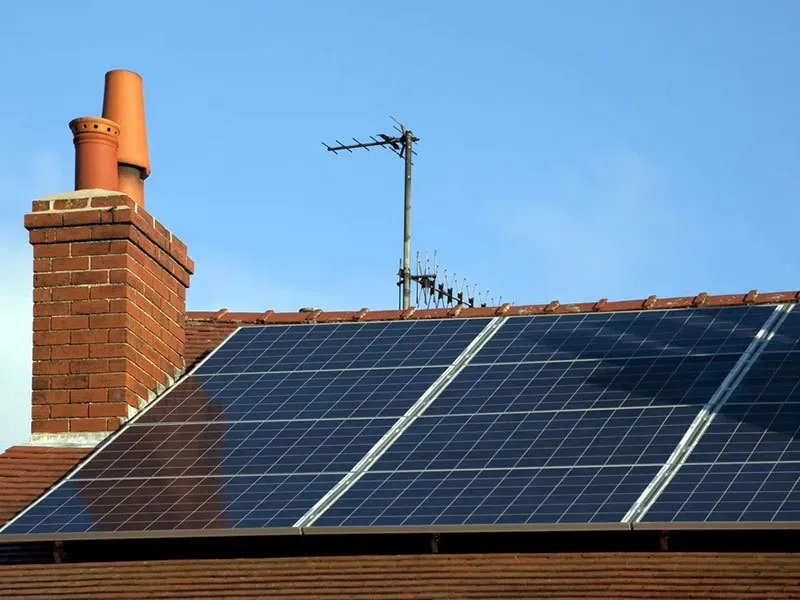Exploring the Benefits of Solar Panels Aligned with Northern Exposure
The Benefits and Challenges of North-Facing Solar Panels
As the world continues to pivot towards renewable energy sources, solar panels have emerged as one of the most popular choices for homeowners looking to reduce their carbon footprint and energy bills. While many people instinctively choose south-facing roofs for their solar installations, north-facing solar panels are also gaining attention. This article will delve into the benefits and challenges of north-facing solar panels, helping energy-conscious individuals make informed decisions about their solar investments.
Understanding Solar Panel Orientation
Before diving into the specifics, it's essential to understand how solar panel orientation affects energy production. Solar panels generate electricity by converting sunlight into energy. Therefore, the amount of sunlight received by the panels is a crucial factor in their efficiency. In the northern hemisphere, south-facing solar panels are generally the go-to choice because they receive more direct sunlight throughout the day. North-facing panels tend to receive less direct sunlight, leading to concerns about their overall energy production potential.
The Benefits of North-Facing Solar Panels
1. Consistent Energy Production
One of the primary advantages of north-facing solar panels is their ability to produce energy consistently throughout the day. Unlike south-facing installations that may produce a significant amount of energy during midday but drop off in the late afternoon, north-facing panels can capture more gentle sunlight during the early morning and late afternoon hours. This can be particularly beneficial for homeowners who consume most of their energy during those times.
2. Optimal for Some Locations
In some geographical locations, especially those closer to the equator, the sun's path is higher in the sky. In such scenarios, north-facing solar panels may capture a stability in energy production year-round. For homeowners in these regions, installing solar panels on the north side of their roofs could yield comparable or even better energy output than traditional south-facing panels.
3. Aesthetic and Architectural Flexibility
For many homeowners, the aesthetic quality of their homes is as important as energy production. North-facing panels may offer architectural designers more flexibility to integrate solar technology into building aesthetics without compromising on style. This can be particularly appealing in urban areas where south-facing roofs may not be as easily accessible.
4. Reduced Overheating Issues
north facing solar panels

Solar panel efficiency can decrease with excessive heat. North-facing solar panels, which are less exposed to the direct midday sun, may operate at cooler temperatures, resulting in sustained efficiency over time. This can extend the life of the panels and enhance their overall performance.
The Challenges of North-Facing Solar Panels
1. Lower Energy Production
While north-facing panels have their advantages, the most significant challenge is that they usually produce less energy than south-facing panels. For homeowners with limited roof space or those primarily driven by the desire to maximize energy production, south-facing panels are often the better choice.
2. Potential for Increased Installation Costs
In some cases, the installation of north-facing panels may require additional equipment or adjustments, such as higher tilt angles or specialized mounting systems, to optimize production. This can add to the overall cost of the system, making it less attractive for budget-conscious consumers.
3. Limited Incentives and Financing Options
In many regions, government incentives and financing options tend to favor south-facing installations. Homeowners looking to install north-facing solar panels may find themselves with fewer financial benefits or longer payback periods, potentially making this option less financially viable.
Conclusion
North-facing solar panels offer a unique set of benefits and challenges that homeowners should weigh carefully. While they can provide consistent energy production and aesthetic advantages, the potential for lower energy output and increased installation costs can be significant drawbacks. As the solar industry continues to evolve, innovations in panel technology and installation techniques may help address some of these challenges.
Ultimately, the decision to invest in north-facing solar panels should be influenced by individual circumstances, including geographic location, energy needs, and financial considerations. By understanding the nuances of solar panel orientation, homeowners can make informed decisions that align with their lifestyles and environmental goals. As the pursuit of renewable energy continues, features of solar installations will evolve, offering more options for homeowners, regardless of which direction their roofs face.
-
String Solar Inverter: The High-Efficiency Solution for Smart Solar EnergyNewsJul.14,2025
-
Revolutionizing Rooftop Energy with the Power of the Micro Solar InverterNewsJul.14,2025
-
Power Independence with Smart Off Grid Solar Inverter SolutionsNewsJul.14,2025
-
On Grid Solar Inverter: Powering the Future with Smart Grid IntegrationNewsJul.14,2025
-
Monocrystalline Solar Panels: High-Efficiency Power for the Future of Clean EnergyNewsJul.14,2025
-
Bifacial Solar Panel: A Smarter Investment for Next-Generation Energy SystemsNewsJul.14,2025







